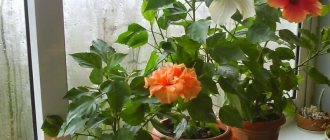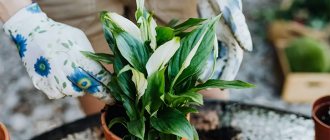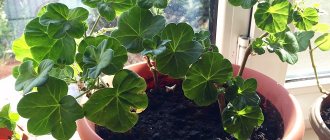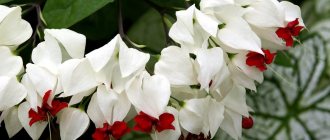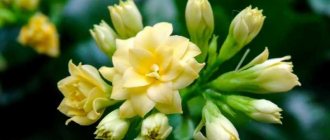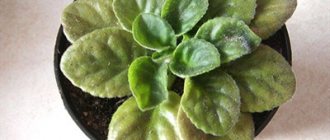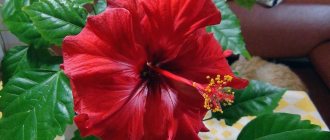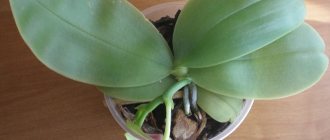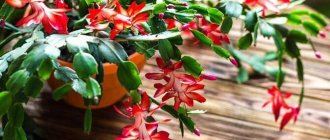How to make Kalanchoe bloom?
At the same time, stress allows you to spur the ejection of a bud, but only if it does not last long and is controlled from the outside. Experts know what to do if a previously flowering Kalanchoe no longer blooms and suddenly loses all its ovaries. The sequence of actions should be as follows:
- Increasing the frequency of watering. The soil under the succulent should be constantly moist for 2-3 days.
- Double dose of fertilizer. Spontaneous feeding outside the plan will force the plant to grow “dormant” ovaries.
- Loosening the soil at the roots. Aeration of the root system enhances the immunity of the buds.
Kalanchoe Blossfeld does not bloom - what to do?
There are at least 130 varieties of the Blossfeld variety: each of them has small double flowers in a wide variety of shades - pink, orange, red and yellow. Kalanchoe Blossfeld does not bloom if it grows in a dark place. It also does not like direct light, but responds with a large number of ovaries to bright light. The correctness of care that stimulates flowering can be determined by two criteria:
- The presence of a red border on the leaves of the plant. When Kalanchoe does not bloom, ovaries do not appear if the leaves have a uniform green color. The red “stripe” signals that the plant is receiving the required amount of water and nutrients.
- No fungal diseases. If brown spots appear on the leaves, they are removed and the cut areas are treated with a fungicide.
Kalanchoe Kalandiva does not bloom
The Kalandiva variety is considered the most adapted to living in an apartment or house. Its bright double flowers are collected in large inflorescences, so if one inflorescence dies, the petals of the neighboring ones also dry out. It has one peculiarity: while other succulents lose their ability to bear flowers due to moisture getting on the leaves, Kalandiva, even considering that it is a subspecies of Kalanchoe, does not bloom unless it is sprayed. It does not tolerate dry air very well, so you need to spray the plant with water at room temperature at least 2-3 times a day.
How to prune Kalanchoe to bloom?
Pruning is recommended for any type of this ornamental plant as a measure to stimulate flowering. The process involves removing excess leaves or diseased peduncles to prevent the development of diseases and give a neat shape.
Since as the stem develops, the upper shoots tend to thin out and become sterile, it is important to know how to properly pinch a Kalanchoe to bloom. These two processes (pinching and cutting) are similar to each other, so they can be combined into one:
- First you need to select the weakest tops of the plant, which have not been covered with flowers for a long time.
- Using scissors or fingers, a small part of the stem is removed with the expectation that the remaining wound will be small.
- After pinching, the edges of the stems are sprinkled with ash or charcoal to prevent dying.
Kalanchoe flower - how to care for it to bloom?
In order for ovaries to appear on a houseplant, its care regimen must be radically revised. You don’t need to think about how to make Kalanchoe bloom at home—you just need to eliminate factors that impede this process. These include:
- Excess sunlight. Constant stay on the windowsill, located on the sunny side of the home, causes the plant to grow in height, spending all the juices on this process.
- Avoiding overwatering. The leaves of the bush are able to accumulate moisture and consume it gradually, so a lack of water is not as destructive as its excess. In summer, the procedure must be repeated once a week, in winter - twice.
- Fertilizer with a special complex for succulents. If a Kalanchoe does not bloom, no matter what its owner tries to do, this may mean that it needs a mineral complex with potassium, sodium and manganese in its composition.
Description of the plant
Kalanchoe is a unique, beautifully flowering succulent. And although among Kalanchoe there are many medicinal species and extravagant decorative foliage ones, most people associate this plant, first of all, with bright flowers.
Neat low bushes, formed by special pruning and treatment with growth inhibitors, seem very neat and strikingly flawless. The plant has fleshy, serrated edge, dark green shiny leaves, succulent shoots and inflorescence shields.
The original Kalanchoe flowers with four petals in simple varieties (or with dozens folded into a rose-like flower in the best double hybrids) offer the brightest acrylic colors - yellow, orange, red, pink and even two-tone. Delicate or flashy, Kalanchoe can be chosen to suit any taste and interior.
Kalanchoe Blossfeldiana (Kalanchoe blossfeldiana) and its numerous hybrids have flooded the shelves and are sold all year round, practically never disappearing from sale. Flowering Kalanchoe crumbs purchased as a gift or for yourself often disappoint just a few weeks after purchase. A bush, which in the first days cannot be seen even under the mass of flowers, often begins to fade, become deformed, and lose all its luster at home.
Kalanchoe blossfeldiana
How to choose a good Kalanchoe flower in a store
To select a healthy and viable plant in the store, you must follow these rules.
Stem
During an external inspection, you need to check the safety of the stem and its elasticity. Determine how firmly the plant is rooted in the substrate. If the plant stem “dangles” in the container, there is a fairly high risk of hidden mechanical damage to the root system during transportation.
Important! You should choose a plant with an even distribution of foliage on the stem, without bald spots. The presence of a bare stem indicates injury to the plant.
Leaf color
In terms of color, the leaves and stem of the plant should have a uniform, uniform color, without white bloom, brown spots and yellowed edges of the leaf blades. It is necessary to especially carefully check the condition of the lower leaves; they must be healthy, not wrinkled, or darkened from excess moisture.
Inflorescences
In flowering species, it is necessary to carefully examine the inflorescences. They should contain as many closed buds and barely blooming flowers as possible. The presence of faded inflorescences and, especially, drying panicles in the selected specimen indicates that the plant has been blooming for a long time, and soon it needs to be prepared for a dormant period.
Substrate
It is very important to check the condition of the earthen substrate in the transport container. The earthen ball should not be too wet, and in the lower part near the holes for draining the liquid it should not be sour
Excessive humidity and mass processing of plants in chain supermarkets can harm the plant and stimulate the process of rotting of the root system, which can lead to subsequent withering of the plant.
It is better to choose plants with a dry earthen lump. Excessive waterlogging is more likely to kill Kalanchoe than short drying. Thanks to its succulent properties and ability to accumulate liquid in the stem and leaves, Kalanchoe is able to withstand short-term drought without serious consequences.
Important! When purchasing, you need to choose the right Kalanchoe. Home care after purchase involves observing an adaptation period and further transplantation
Kalanchoe is a short-day plant. To stimulate the budding process, a short day lasting less than 8 hours is artificially created. To do this, cover the bush with a cap that does not allow light to pass through, or put the pot in a closet.
Transfer
This simple operation, understandable even for beginners, often leads to problems. Kalanchoe has fragile roots, it is important to do everything correctly.
Is a transplant necessary after purchase?
If the owners took a bush at a sale after it had finished blooming, of course, replanting is necessary. But when a plant at the peak of its decorative potential is moved to a new pot, you shouldn’t be surprised:
- that it fades quickly;
- does not produce buds;
- can reset existing ones.
A complete transshipment will take place without consequences:
- carefully remove the lump from the transport container;
- move to a larger pot;
- Fill the free space with fresh soil.
But such an operation for Kalanchoe is, at best, useless, and at worst, dangerous. Although it calms the owners. The roots become confused in the transport substrate and do not grow into the new soil. Therefore, do not drink water from it; fresh soil may turn sour.
If the roots are partially or completely freed from the old substrate, the sucking shoots are sure to be injured. Kalanchoe will not be able to bloom and regenerate the underground part at the same time. The plant will fight for life, drop its buds or urgently “finish” flowering.
Priming
The soil should be loose, permeable, neutral or slightly acidic. It is a myth that all succulents prefer alkaline.
It is better to take a ready-made store-bought substrate for cacti. In the universal one for beautiful flowering ones, you will have to add at least 20% perlite.
Only coarse sand is used. If the fraction is small, it does not loosen, but, on the contrary, glues the soil together.
Pot
You can take a plastic or ceramic pot made of unglazed clay with bottom holes. The shape is normal, the diameter is 2-3 cm larger than before. Drainage must be laid at the bottom.
If the owners have chosen a tall flowerpot, expanded clay should occupy all the “extra” space. Several cuttings or seedlings are planted in wide bowls. The ampelous Kalanchoe Mangina looks especially beautiful in them.
Transplant methods
It is best to replant the crop using the method of partial transshipment - the earthen ball is freed from a third of the old substrate, the outer roots are straightened. There are 2 more ways:
- A complete transplant is considered an emergency and is extremely undesirable for Kalanchoe. It is used if the soil is damaged, soil pests have infested or has begun to rot, and the roots need to be cleaned. The plant is completely freed from soil, the lower shoots are washed.
- The usual transfer is to simply remove the Kalanchoe from the pot and transfer it to a larger one. The earthen lump is not disturbed at all. This operation is possible if there is no white coating on the surface, the plant is healthy, and the old substrate is good.
Care
Location and lighting
Loves bright rooms with diffused light. In the summer, it should be placed on windows located towards the west and east. Direct sunlight should be avoided to avoid leaf burns. Loves fresh air, but drafts should be avoided. In winter and during the flowering period, you can use phytolamps if daylight is not enough (the plant begins to stretch and the inflorescences become smaller). The complete absence of light also negatively affects indoor plants.
Temperature
The Kalanchoe flower can easily withstand high temperatures in summer, up to thirty degrees or more. In winter, you need to maintain a cool temperature of +16-18 degrees (not lower than +10), this helps the rapid formation of flower buds. When it is cool, the flower becomes comfortable to bloom. If the room is too hot, this process is suspended.
Air humidity
Air humidity does not play a key role in the life of a plant. Kalanchoe thrives in both dry air and high humidity. There is no need to spray the plant, but sometimes you can wipe the leaves with a damp cloth or sponge to remove dust. After this procedure, it is necessary to repeat wiping with a dry cloth.
Watering
Moderate, with drying out of the top layer of soil. In summer - about 1-2 times a week (but do not forget to check the soil). In winter, watering should be done a minimum number of times. Kalanchoe can tolerate an insufficient amount of water, but an excess will destroy it, because... may lead to root rot. If the soil dries out greatly, the plant may shed its leaves.
The soil
For such an unpretentious plant as Kalanchoe, you can choose any soil for succulents. It can usually be found in many flower shops. A skilled gardener can create such soil himself. To do this, you need to mix peat, turf and leaf soil in equal quantities. You can add charcoal. It is necessary to put drainage at the bottom of the flower pot.
Fertilizer
It is enough to fertilize non-flowering species once a month during the growth period (spring-summer). They bloom once every three weeks in spring and summer, and also in autumn (for the formation of flower buds). In cold weather, you should absolutely not fertilize the plant. Even if it withers, you cannot fertilize it in winter. It is recommended to use store-bought fertilizers for succulents or complex fertilizers (mineral and organic) with a low nitrogen content.
Transfer
It is necessary to replant a houseplant if the flower pot in which the Kalanchoe is currently located becomes too small for it. Replanting may also be required when the plant’s soil begins to rot after prolonged watering.
Young Kalanchoe requires annual replanting due to the rapid growth of roots. It is recommended to do this when the spring period ends. To replant, you need to take the plant out of the flower pot along with a small amount of soil, place it in another and water it.
Then the plant begins to slowly adapt to its new “place of residence.” In the new pot, it is necessary to maintain equal proportions of new soil and existing soil. Most often, Kalanchoe goes through an adaptation period of seven days. After which you can feed the flower. When choosing a new flower pot, you should choose wide and deep shapes. .
Medicinal properties
Juice is extracted from the shoots of Kalanchoe pinnate, which is used to prepare medicines on an industrial scale. Its effectiveness has been proven through scientific research. The medicinal properties of Kalanchoe Degremona have not been recognized by the scientific community, but the juice from this plant is used in folk medicine.
Johann Wolfgang Goethe believed that daily consumption of Kalanchoe “air babies” rejuvenates the body.
Below is a table showing the names and principles of treatment of the main types of diseases.
| Common name | Name of the disease | Treatment principle |
| Oral diseases | Periodontitis, gingivitis, inflammation of the oral mucosa | Apply a tampon soaked in juice for 10-15 minutes several times a day. |
| Periodontitis | Inhale with juice. | |
| Respiratory diseases | Runny nose, flu | Place 5 drops of juice in both nostrils to prevent diseases. |
| Sore throat, sore throat | Gargle with a mixture of equal amounts of water and juice. | |
| Vascular diseases | Varicose veins | Prepare a tincture from equal volumes of leaves and a 40% alcohol solution or vodka. Keep it in a dark place for a week, shaking it occasionally. Rub the resulting tincture on your feet at night. |
| Eye diseases | Destruction of the vitreous body | Prepare a mixture of Kalanchoe, viviparus and aloe juice, taking these ingredients in a ratio of 1:1:2. Place the solution in both eyes, 2 drops 2 times a day. |
| Skin diseases | Burn, soft tissue necrosis, other skin defects | Apply a cloth bandage soaked in juice to the affected area of skin or use to lubricate the surface of wounds. |
| Erysipelas | Prepare a mixture of equal amounts of 0.5% procaine solution and juice. Moisten the compress with it, which then apply to the skin. | |
| Squamosal lichen | Make an ointment from a mixture of juice, eucalyptus oil and honey, taken in a ratio of 1:3:1. Leave the resulting mixture for 3 days, and then put the ointment in a dark jar. Use as needed. |
The juice of Kalanchoe leaves and stems is used in gynecology and obstetrics. Cosmetic products are made on its basis, after the use of which the aging process slows down.
Origin of Kalanchoe
The described inhabitant of the windowsill is considered a medicinal representative of the flora, often used for nasal congestion and other inflammatory processes. The question of whether flowering Kalanchoe can be used for medicinal purposes is still controversial. But even if it is impossible to get rid of a runny nose with the help of such a plant, it will delight its owners with its flowers.
This type of indoor decoration belongs to the Crassulaceae family, and translated means “plant with thick skin.”
The island of Madagascar is considered the birthplace of the green creature, but its growth can be found almost throughout Asia. The flowering beauty is grown both in greenhouses and in the room. This type of indoor decoration belongs to the Crassulaceae family, and translated means “thick-skinned plant.” Thanks to its thick stems and leaves, it accumulates moisture and goes without watering for a long time. Evaporation is prevented by a thin film covering the leaves and stems. All these features must be taken into account in order to care for a blooming creature.
Let's highlight the basic principles of care:
- Watering mode.
- Requirements for illumination and temperature.
- Transfer.
- Reproduction methods.
- Feeding, pruning.
- Protection from diseases.
Now let’s try to consider each of the mentioned principles in detail.
Video clip on how to grow Kalanchoe at home
Video on caring for flowering Kalanchoe
Thus, it is clear that flowering Kalanchoe is a completely unpretentious plant.
The only thing that the gardener will always have to remember is that he must be careful when watering and not be too zealous with spraying the leaves. Due to the fact that a large amount of nutrients and moisture accumulates in the foliage and shoots of the plant, Kalanchoe easily tolerates lack of proper care for a short period of time. You can also share your secrets for caring for blooming Kalanchoe. If you have questions, ask them in the comments below, we will be happy to answer them.
Why does Kalanchoe start to grow upward and stop blooming?
There are several reasons why a plant does not produce flowers. The main ones are:
- Lack of knowledge by the owner of the flower about the technology of growing the plant. After all, in the store the seller said that this potted crop does not require special care.
- There is not enough lighting for flowering. As a result, the shoots begin to stretch; they simply do not have enough strength to begin to form inflorescences.
- Very often, when we come to the store, we see flowering bushes. It seems to us that this culture is constantly blooming. But this impression is deceptive. To get this look, flower suppliers, before sending them to the store, achieve the appearance of buds by ordinary forcing.
- A small plant with a small root system is planted in a transportable pot. The soil in it contains special fertilizers that are valid only for two months. This Kalanchoe is kept for several days in a short daylight hours, usually 10 hours. The bushes begin to lay flower buds.
- When such a plant turns out to be in good home conditions, where normal lighting and temperature are created for it, it continues to bloom, thanks to the nutrients remaining in the pot.
To see a flowering bush again, you need to help the plant, it must gain strength and begin to bloom in good home conditions.
Adviсe
Inexperienced gardeners will benefit from simple tips on plant care.
- To prevent the Kalanchoe from dropping the buds that have appeared, it should not be moved to another place.
- When flowering has begun, it is not recommended to replant the plant or pinch out young shoots so as not to harm the flower.
- When purchasing, you should pay attention to plants that have yellow flowers. They are not so picky about care and can bloom in different conditions. But those with pink flowers will force the owners to work hard to achieve repeated flowering.
To summarize, we can only say one thing: Kalanchoe is a rather finicky plant that requires special care. If all the rules are followed, it will delight you with flowering for a long time.
Kinds
Let's look at several popular types of Kalanchoe, often used in indoor floriculture.
Benta
A plant with good decorative properties. A tall, unbranched shrub with a powerful stem and large leaves. It blooms with large white flowers, up to 2.5 centimeters in size. Blooms in April-May, likes cool weather.
Beharskoe
A plant with bare stems and entire pubescent leaves. The length of the leaves reaches 20 centimeters, width - 10. It blooms with small yellow flowers collected in umbrellas.
Blossfeld
The plant has a long flowering period. It reaches a height of 30 centimeters. It has dark green, rounded leaves. The flowers are most often red, but can be yellow, orange or pink.
Felt
Due to the special shape of the pubescent leaves, densely located on the stem, the plant is called “cat ears”. It blooms with small multi-colored flowers that combine red, purple, and silver tones.
Degremona
It can reach half a meter in height. It has fleshy leaves, on the edges of which small rosettes are formed - babies that can take root and germinate. It blooms in winter with bell-shaped inflorescences, purple or pink. Has strong medicinal properties.
Large-flowered
It grows up to 60 centimeters in height, has light green, sometimes reddish leaves. Yellow flowers are collected in umbrellas. Flowering period is May. The birthplace of the flower is India.
Mangina
The plant is distinguished by large pink inflorescences of 10-15 pink bell-shaped flowers. Active flowering occurs in spring.
paniculate
The plant reaches a height of 60 centimeters, densely covered with large silvery leaves. The lower ones are arranged in the form of a rosette, and the upper ones grow less frequently. It blooms with yellow small flowers collected in paniculate inflorescences. Flowering period - late April or May.
Marble
It has oblong leaves with a serrated edge. The plant got its name because of the original color of the leaves. From green they gradually become gray, with brownish splashes. It blooms with white flowers, united in peculiar umbrellas. Has a long flowering period (from January to April).
Cirrus
Cirrus Kalanchoe reaches a meter in height. Densely covered with thick serrated leaves on which daughter rosettes form. Known for its medicinal properties.
Fiery
A low plant with a slightly branched trunk. It blooms with bright red large flowers collected in umbrellas. Does well in cool rooms.
Tubular-flowered
Tall shrub with large oblong leaves. Blooms with beautiful red flowers. The corollas are arranged in the shape of a tube up to 2.5 centimeters long. The plant has many varieties, with flowers in all shades of red.
Dissected
The vertical stem of the bush changes direction of growth over time and begins to droop. It has light green waxy leaves with dissected edges. Blooms with bright orange flowers.
Don Sergio
It has a long flowering period and is very decorative. Thick dark leaves combine pleasantly with bright double inflorescences. The flowering period begins at the beginning of winter.
Kalandiva
A low plant, distinguished by abundant dense double flowers. Large glossy leaves growing in pairs make the plant even more beautiful.
Mix
The plant has a long flowering period (up to six months). It is distinguished by its richness of shades when flowering, unpretentiousness and good healing qualities.
Rosaline
The compact plant blooms with double flowers in delicate pastel colors. It has round, glossy leaves with a wavy edge.
Characteristics of culture
Kalanchoe has the following characteristics:
- Type of plant: succulents.
- The color of the flower/fruit is red, pink, yellow and white (depending on the variety).
- The color of the leaves is bright green, dark green with a reddish tint and greenish-white with a woolly surface.
- Sun Requirement - Needs bright sunlight.
- Size - medium (up to 0.5 m or more).
- Flowering - once a year (in winter or spring).
- The aroma is medium, moderate.
Kalanchoe - how to care after flowering
Question: What to do after Kalanchoe blooms, when it has branched out greatly, like a tree, and is almost bald. Is it possible to trim it and how to do it?
Agava: Kalanchoe can be cut any way you like! You can cut cuttings and stick them in the same pot, you can even leave one stump - it will sprout and curl. The only thing is that this applies to the ordinary Blossfeld Kalanchoe, which blooms red. All sorts of hybrids such as white, yellow and pink may die completely after flowering.
Nathanella: There are only two options for how to deal with faded Kalanchoe:
- Take cuttings, root them and get a new plant. It will bloom when it becomes old enough, i.e. probably in a year. Ideally, Kalanchoe Blossfeld is a tall, erect plant (50 cm) with a non-branching stem, so pinching does not give any results. We sell Dutch specimens, which are apical cuttings from an already mature plant. It is not difficult to make them bloom, the main thing is to observe the light regime.
- Try to arrange a “dark” one for an adult plant and get a flowering bush. Kalanchoe is a short-day plant, i.e. In order for the bush to bloom again, it should be darkened from about 5 pm to 9 am the next day. Daylight hours should not exceed 8-10 hours. This simple procedure should be done for a month and then the Kalanchoe will bloom again. But first you need to remove the old peduncles.
Tip: “dark” can be arranged using a dark plastic bucket. After flowering ends, cut off the flower stalks and put the plant on a shady windowsill, hardly water it for a month, then move it to a bright place and start watering and caring for it as usual. Well, don’t forget that Blossfeld’s Kalanchoe is still a succulent plant, so it should be cared for as a succulent.
Question: My Kalanchoe has already bloomed for the second time, it doesn’t seem to be going back, so it’s time to send it to rest. I know I need to cut his hair. Just want to know specifically what to cut and how much to cut?
Buttercup: Trim flower stalks. But the height of the bush is whatever you want.
What needs to be done to make it bloom?
There are several ways to make this unusual beauty bloom. The first thing to do is to create appropriate conditions for its maintenance. That is, the room temperature should not fall below 10 degrees Celsius, and also not rise above +25 degrees. In winter, you should not place Kalanchoe near radiators or any heating devices. The plant is not at all afraid of temperature changes, but it will not bloom if the temperature is too high.
After the Kalanchoe blooms for the first time, it is important to remove all old flower stalks and wait for young shoots to appear. After they appear, you must immediately pinch off the top pair of leaves on each.
It is also necessary to ensure that the plant does not stretch upward. If this does happen, then you need to completely cut off the top. When shoots appear at the cut site, you need to let them grow a little. Then, when the third pair of leaves appears, you need to pin the Kalanchoe in this place. Do this with all shoots, then the bush will be more lush.
The last pinching should be done at the end of the last autumn month. Soon the first flower stalks should appear at the very tops, which at first are not much different from young shoots. However, over time, you will see that this is a rosette of a peduncle, from which, after a certain period of time, the first buds will appear, a little like a hedgehog.
If by the beginning of spring the flowers do not appear, then pinching the shoots must be done again. It may also happen that during wintering the Kalanchoe bush becomes very bare. In this case, the plant must be cut and transplanted into a pot with a new substrate. After which it must be watered thoroughly. After this procedure, the leaves on the bush may droop, but with the appearance of the first roots they will become the same again. It will take approximately 2 weeks for the new root system to develop. Literally immediately, buds will appear and turn into lush flowers.
In addition, in order for the plant to bloom, it is necessary to take care of the daylight hours. Kalanchoe blooms best in offices where people work 8 hours a day. But it is also possible to create such conditions at home. The only thing you need to do is darken it after a certain period of time. This can be done using a regular dark cellophane bag. It is best to place this plant on the western or eastern side, so it will receive optimal lighting.
You need to know that Kalanchoe is one of those plants for which excess fertilizer is only harmful. And with large doses of fertilizing, it simply will not bloom, but will only produce beautiful and strong foliage.
To prevent this from happening, you can feed the plant only once a month. In this case, the norm should be reduced exactly by half, then the flowering will be lush and abundant.
Reasons for lack of flowering
With good care, the plant has beautiful leaves with wavy, pointed or smooth edges and blooms in dense clusters with small flowers. If you buy a Kalanchoe at a flower shop, you usually buy an already flowering specimen and expect the same lush and lush flowering as when you bought it. But after a couple of months, the flowers fall off and dry out, and new buds stop forming, the branches become elongated, and the leaves become smaller. Therefore, any gardener who grows this flower for the first time has a question about why Kalanchoe does not bloom and grows upward.
Problems with flowering occur with many types of flowers, some are difficult to get to bloom at all, especially if suitable conditions are not created for them, they lack nutrients, etc.
There are more than 200 varieties and hybrids of Kalanchoe in the world. Most often in apartments you can find Kalanchoe Blossfeld - a spectacular plant with a lush, bright head of flowers. This species is characterized by long flowering - from February to the end of spring, and at home it can last for a longer period. It is often purchased as a gift: it is no less beautiful than an expensive bouquet, and pleases the eye much longer.
But sooner or later the flowering stops, and no matter what the housewives do, the Blossfeld Kalanchoe does not bloom. What should be done so that the formation of buds continues, the plant is constantly covered with flowers, and the leaves do not become smaller? Without flowers, with deformed small foliage, the elongated bare branches look very unpresentable, there is no decorativeness in them.
There are several reasons why Kalanchoe does not bloom.
- Hybrid. When buying a flower, be sure to check its type. If it's a hybrid, don't expect constant flowering! In America, the plant was nicknamed “disposable” because hybrid varieties have denser inflorescences, topped with large, beautiful flowers and are in greater demand than ordinary ones.
- Incorrect care. Perhaps the wrong conditions were created for keeping this tropical beauty. This may be shade, lack of moisture, too cold a room, or unsuitable soil.
- Overwatering. One of the reasons for stopping growth may be excessive watering, stagnation of water and, as a result, rotting of the roots, the appearance of fungus or gray rot.
- Damage by diseases or pests. Flowers are attacked by powdery mildew, scale insects, aphids, spider mites and many other insects and diseases. They stop the growth and formation of buds, sucking all the juices from the bush.
- Long daylight hours. The tropical resident loves light, but not more than 10 hours. In summer, the pot is removed from the windowsill or the window is darkened in the afternoon, when the peak of the solstice arrives.
- Lack of knowledge about pet care. Every now and then, sellers, trying to sell a flower, assure buyers that the plant is unpretentious and does not require special care, the main thing is to water it on time. But that's not true! Despite the fact that the plant is truly undemanding, it still needs care.
For these and many other reasons, there is no flowering, and the flower grows upward, shedding its leaves, exposing its branches.
Reproduction methods
Kalanchoe Blossfeld has the most breeding methods among flowering species.
In addition to seed or cuttings, it can be propagated:
- axillary buds appearing after pruning, similar to cabbage forks;
- by dividing the bush - sometimes the crop produces root shoots.
You can also try to breed only Kalanchoe blossfeldiana with leaves, although the operation rarely ends in success. The remaining species, capable of beautifully blooming, produce too small plates - they quickly dry out or rot when planted.
Cuttings
In spring or summer, cut branches of 7-15 cm. Dry from 2 hours to 24 hours. They are not treated with stimulants. Planted:
- in a light substrate;
- sand;
- perlite;
- peat-sand mixture.
It is better not to root Kalanchoe in water - it is a succulent, the lower part rots easily. You will have to update the cut or replace the cutting.
There is no need to cover the branch with a transparent cap. Water carefully. When a new leaf appears, Kalanchoe can be transplanted from a barren substrate into light soil.
Seeds
It is better to buy planting material in a store. At home, the crop rarely produces seeds; they ripen and germinate poorly.
Step by step:
- Small Kalanchoe seeds mixed with sand are sown in the peat-sand mixture and low bowls as rarely as possible. The granulated ones are laid out using a toothpick at a distance of at least 1 cm from each other.
- Don't sprinkle it, just press it onto the substrate.
- Spray with warm water from a spray bottle.
- Cover the bowl with transparent film or glass.
- Keep at 20-25° C and good lighting.
- Ventilate daily and remove condensation.
- They dive at the stage of 4 true leaves.
Kalanchoe stretches upward and only lowers its leaves
When purchased, Kalanchoe looks like a beautiful bush with wavy leaves, densely covered with buds. But after a while, flowering stops, the plant begins to stretch upward, the green cover becomes smaller and gradually falls off.
Kalanchoe with elongated leaves and stem
Why does Kalanchoe stretch out and not bloom? There are only two reasons for the unpresentable appearance. The first is the lack of sleep period, which was mentioned above. After the end of flowering, Kalanchoe needs at least a month of respite, otherwise it simply will not have time to form new buds.
The second reason is lack of light. Like other succulents, Kalanchoes need a minimum of 10 hours of light. Due to lack of lighting, the stems and leaves begin to deform, become thin and fragile. As a result, foliage grows only at the top of the plant, which leads to damage to the weakened trunk.
Kalanchoe that has suffered from a lack of sunlight can be saved by installing additional lighting and pruning all elongated shoots. After pruning, it needs to be provided with a period of complete rest. It will take about a month to restore the dense crown of the plant.
Important! Kalanchoe should not be placed in direct sunlight. The leaves of the plant contain a large amount of water and can get sunburned.
Peculiarities
Any plant needs regular soil moisture. As a rule, owners of home flowers water them only when the ground becomes completely dry. But this approach is not entirely correct
After all, it is important to take into account not only the degree of dryness of the soil, but also the characteristics of the root system of a particular plant
It is also important to take into account what time of year it is outside the window; for example, in summer a flower needs more frequent watering than in winter. Proper care and timely watering are the key to the health and beauty of your favorite plant.
You shouldn't water a plant like Kalanchoe too often. In case of excessive moisture, the roots of this plant will begin to rot little by little, which will ultimately lead to the death of the Kalanchoe. Excessive moisture, especially in the cold season, can cause the plant to simply disappear.
In addition, improper watering can cause other problems, for example, various fungal diseases can develop. This is especially dangerous during the flowering of a house plant, since the fungus will have a detrimental effect on the formation and development of the bud itself.
If the plant does not have enough moisture, this will also negatively affect its condition. The leaves will begin to wither, dry out, turn yellow and fall off.
During the hot season: spring and summer, this type of plant especially needs proper and regular watering. During this period, it is advisable to water the Kalanchoe at least twice a week. Especially if the container with the flower is on the sunny side.
It is worth mentioning separately that Kalanchoe should be watered not only with ordinary water, but also with water with the addition of various types of fertilizers. This will allow the root system to be saturated with useful substances, which will have a beneficial effect on the general condition of the flower.
In autumn and winter, you should switch to a different watering regime, since in the cold season, excessive watering and spraying of the plant can lead to its death. As a rule, on cold days, Kalanchoe plants should be watered once every two weeks.
Since the flowering period for this type of plant usually begins at the end of winter, it will need to be watered once a week. In this case, it is necessary to alternate watering with plain water with watering with liquid with useful additives.
Diseases and pests
Kalanchoe, including species that can bloom beautifully, is a healthy crop with strong immunity. Pests often fall on bushes:
- with garden soil used for replanting;
- “move over” from neighboring plants;
- are brought into the house from the store, so new specimens need quarantine.
On culture you can find:
- scale insects;
- spider mites;
- scale insects
Infectious diseases also usually spread to Kalanchoe from garden soil. The rest are the owners' fault. Root rot occurs when there is waterlogging, especially in compacted soil. Leaf - when watering is done along the crown.
